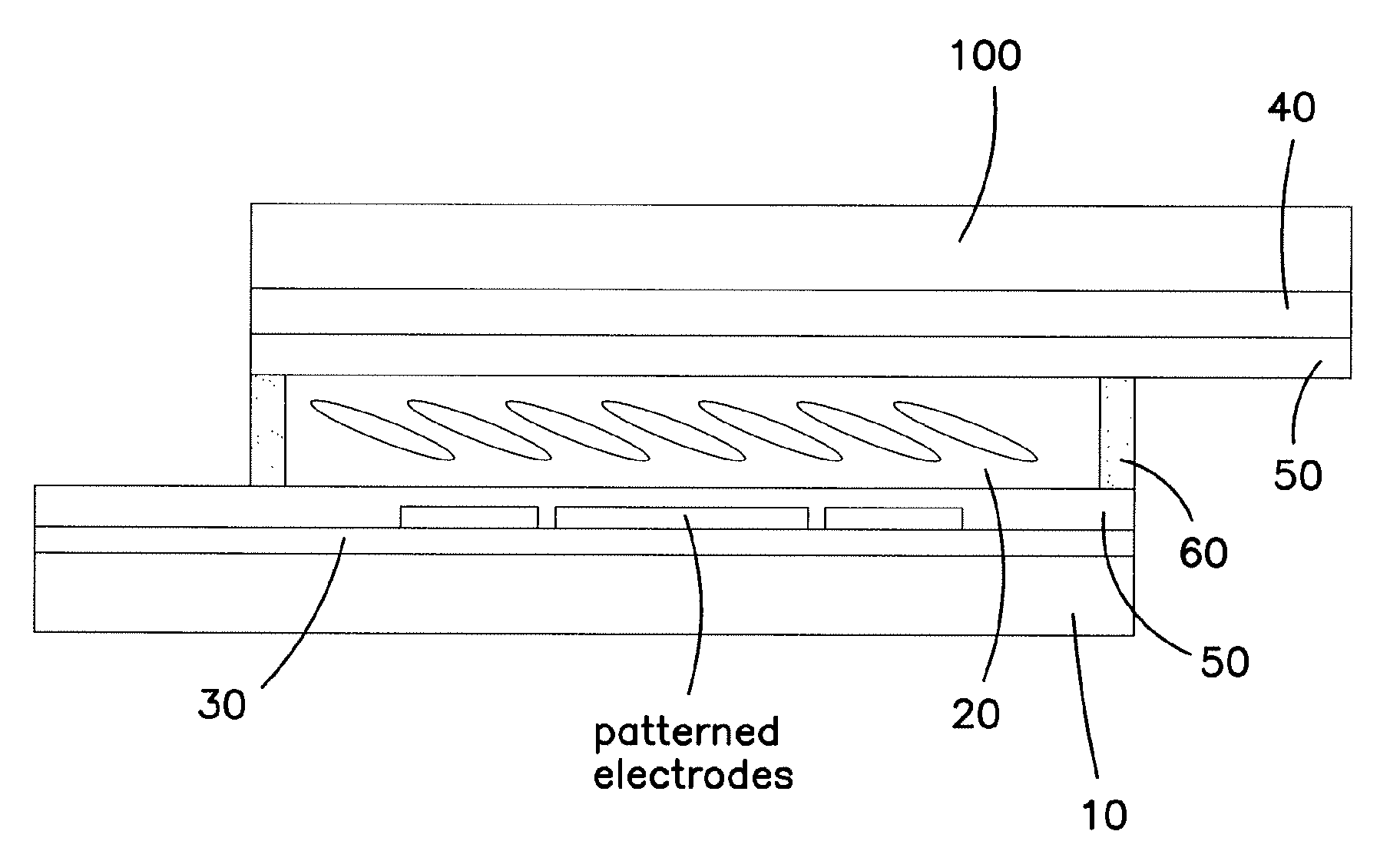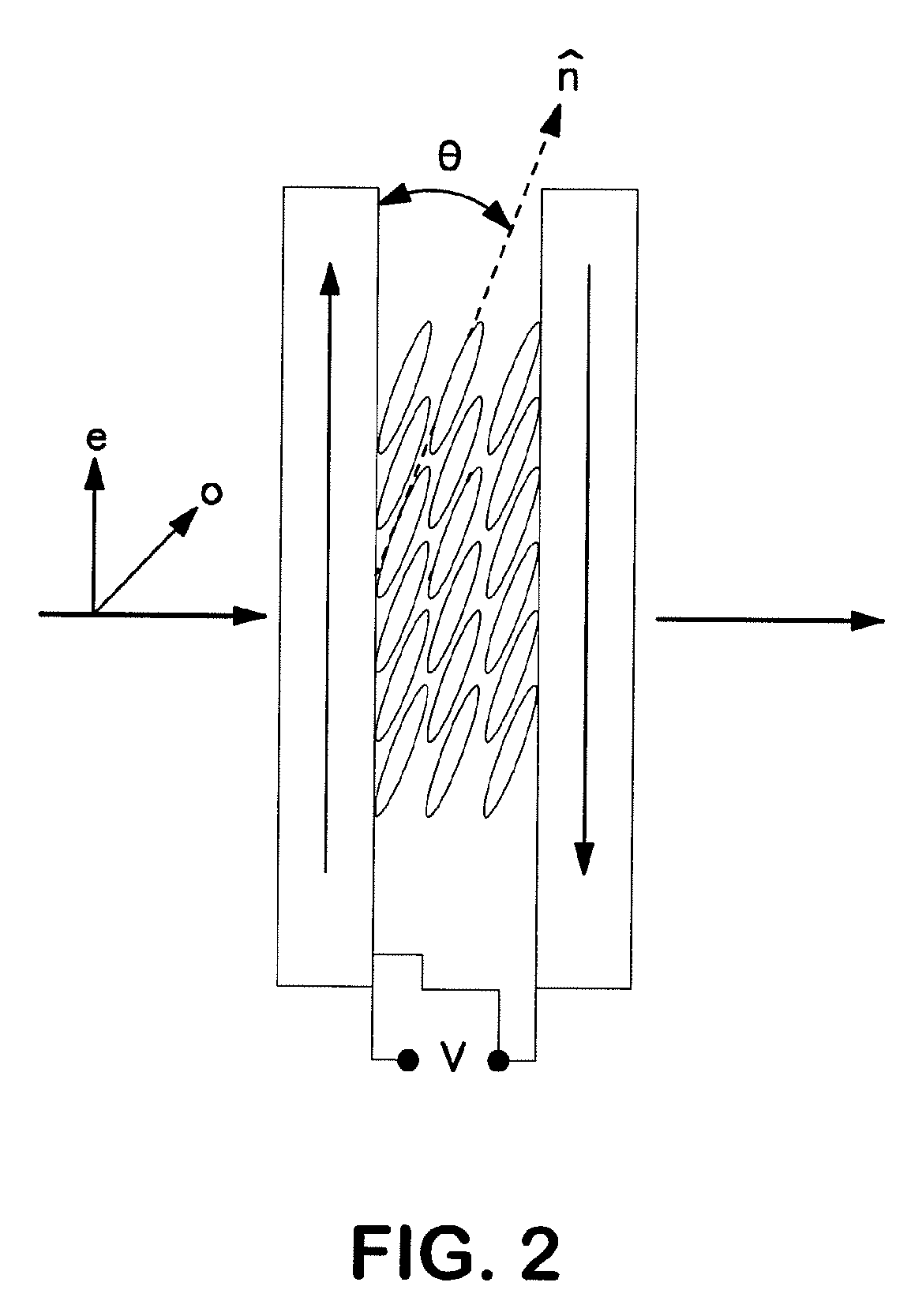Electro-Optic Lenses Employing Resistive Electrodes
a technology of resistive electrodes and optical lenses, applied in the field of optical lenses, can solve the problems of affecting binocular depth perception, bulky and costly spectacles, and poor optical performan
- Summary
- Abstract
- Description
- Claims
- Application Information
AI Technical Summary
Benefits of technology
Problems solved by technology
Method used
Image
Examples
Embodiment Construction
[0014]The following description provides non-limiting details of constructing the electro-optic lenses of the present invention. This invention provides electro-optic lenses filled with liquid crystal material that can be realigned in an electric field. The lenses function as diffractive-optical-elements (DOE). DOE are the result of applying voltages across a thin liquid-crystal layer which responds by altering the director-orientation field and creates nonuniform refractive-index patterns which then lead to a nonuniform phase-transmission-function (PTF) across the face of the cell. In the invention herein, accurate control of the PTF to create the desired DOE is achieved by applying the desired voltage drop across the resistive patterned electrode set.
[0015]As used herein, “resistive patterned electrode set” is one or more areas of electrically conductive material (electrodes) that are electrically separated from each other and to which a desired voltage drop can be applied. If the...
PUM
 Login to View More
Login to View More Abstract
Description
Claims
Application Information
 Login to View More
Login to View More - R&D
- Intellectual Property
- Life Sciences
- Materials
- Tech Scout
- Unparalleled Data Quality
- Higher Quality Content
- 60% Fewer Hallucinations
Browse by: Latest US Patents, China's latest patents, Technical Efficacy Thesaurus, Application Domain, Technology Topic, Popular Technical Reports.
© 2025 PatSnap. All rights reserved.Legal|Privacy policy|Modern Slavery Act Transparency Statement|Sitemap|About US| Contact US: help@patsnap.com



